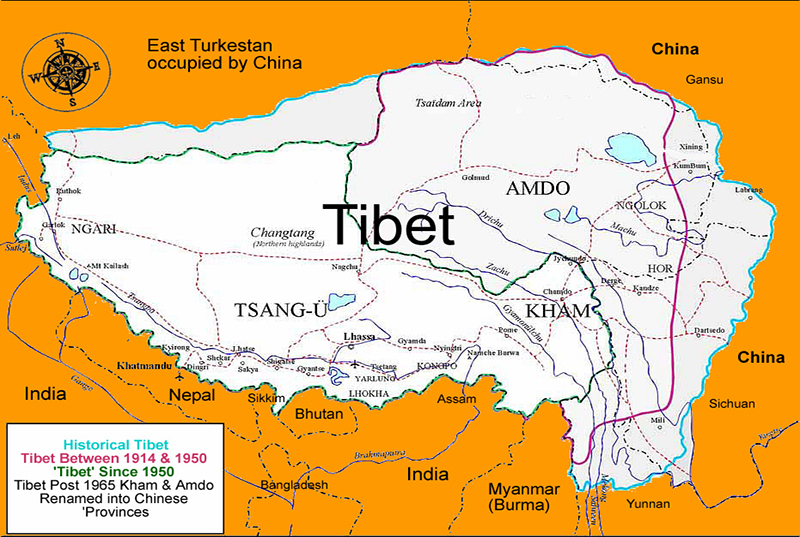 New York: - Dr. Lobsang Sangay, the current Sikyong, or political leader of the Central Tibetan Administration (CTA) in Dharamshala, recently announced a big push. The Tibetan community would begin a renewed struggle for the "middle way" approach which stresses autonomy over outright independence. It was a serious and courageous statement of resolve by the CTA and represents a new chapter in the Tibetan struggle.
New York: - Dr. Lobsang Sangay, the current Sikyong, or political leader of the Central Tibetan Administration (CTA) in Dharamshala, recently announced a big push. The Tibetan community would begin a renewed struggle for the "middle way" approach which stresses autonomy over outright independence. It was a serious and courageous statement of resolve by the CTA and represents a new chapter in the Tibetan struggle.
As a 25 year Western campaign to "Free Tibet" with its juggernaut of awareness campaigns, Beasty Boy concerts, Richard Gere and feature films such as Kundun and Seven Years in Tibet, seems to have permanently stalled and conditions over the last decade inside of Tibet have worsened, one has to ask: "What took the CTA so long?" Perhaps they were waiting for a new champion to enter their corner, and perhaps that time has now come.
The recent swearing-in ceremony of Minister Narendra Modi was punctuated by a very prominent invite of Mr. Sangye to the proceedings. The symbolism of this gesture—and Mr. Sangye's front-row seat—sent a strong signal to China and the world that India has no intention of bowing to Chinese pressure on the issue and will approach any future negotiations with Beijing from a position of balance and strength.
This also represents new way of thinking for Tibetans. Initially, it was the Tibetan's choice to rely on the international community to advocate on their behalf up to this point. This new move by the CTA points to a more reflective and less West-dependent Tibetan diaspora that has lost patience not only with their current status, but with the efforts of those in the West who purport to advocate on their behalf.
Tibetans may have wearied from the plodding calculations of Western-based efforts that seem to find their struggle more useful as a political pawn than as a compelling human rights issue. The recent announcement by the CTA is not only a call for Tibetans to take more control of their own fate, but a none too subtle message to the West that enough is enough, you have had your chance, we will control the narrative from here forward and India will give us their wise counsel and the freedom to do so.
Not surprisingly, the initial reaction of the international Tibet support community has been tepid.
Theirs is a world where the idea of freeing Tibet is one that should be viewed through the lens of a status quo that must be maintained. It points to an entrenched infrastructure based on fundraising and self-preservation that occasionally spits out the odd condemnation of conditions in Tibet from Congressmen and Parliamentarians who are ultimately afraid of angering China.
They like to call it the "institutionalization" of the Tibetan movement, but in reality, this just means that the agenda is not set by the Tibetans themselves. It moves at the whims of Western governments and is demonstratively not pro-active. Unfortunately, the status-quo is not sustainable for Tibet during these times.
Dr. Sangay knows this and is making an attempt to shake free of the current stagnation. If the West truly wants to help Tibet, they should get behind India's effort to support its Tibetan community and back any initiatives that come from Dr. Sangye's announcement. In this way we can place control of the Tibetan movement back where it rightly belongs: in the hands of the Tibetans themselves.
James Rinaldi is the current Director of Himalayan Aid and author of the upcoming memoir: "Tibetan Fire Drill." Reach him at:
The views expressed in this article are the author's own and does not necessarily reflects the editorial policy of The Tibet Post International.


![Tibet has a rich history as a sovereign nation until the 1950s when it was invaded by China. [Photo: File]](/images/stories/Pics-2024/March/Tibet-Nation-1940s.jpg#joomlaImage://local-images/stories/Pics-2024/March/Tibet-Nation-1940s.jpg?width=1489&height=878)















